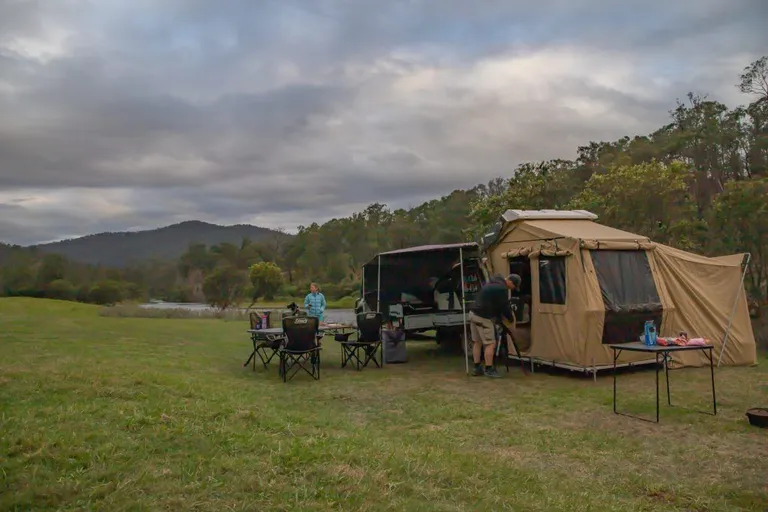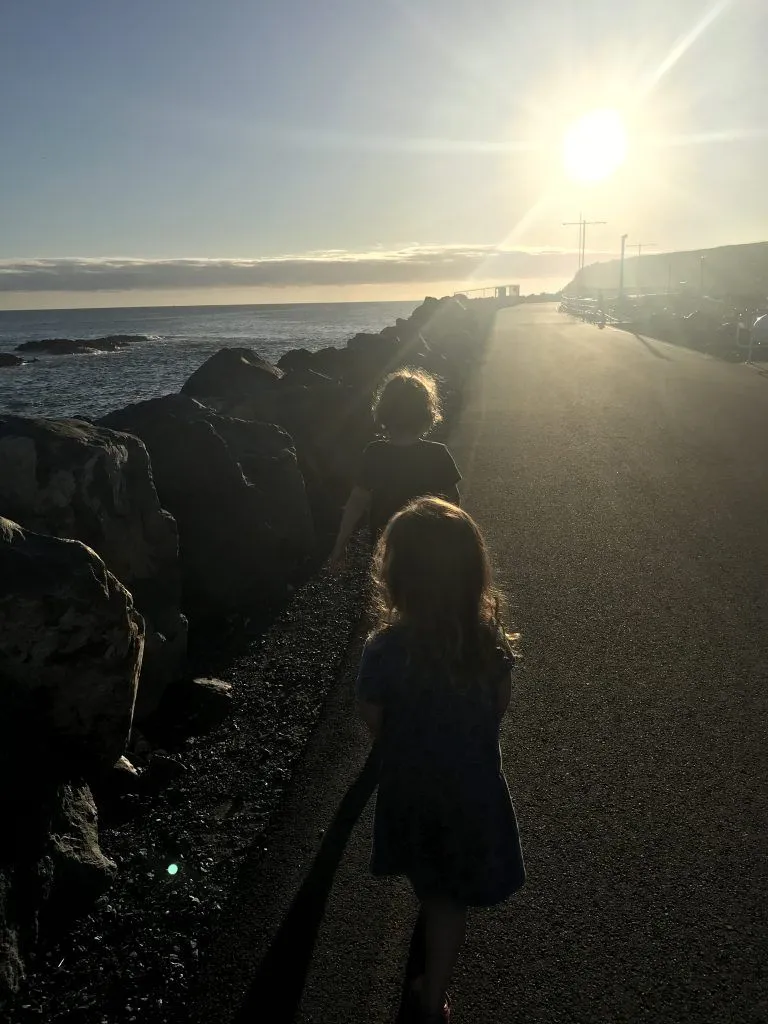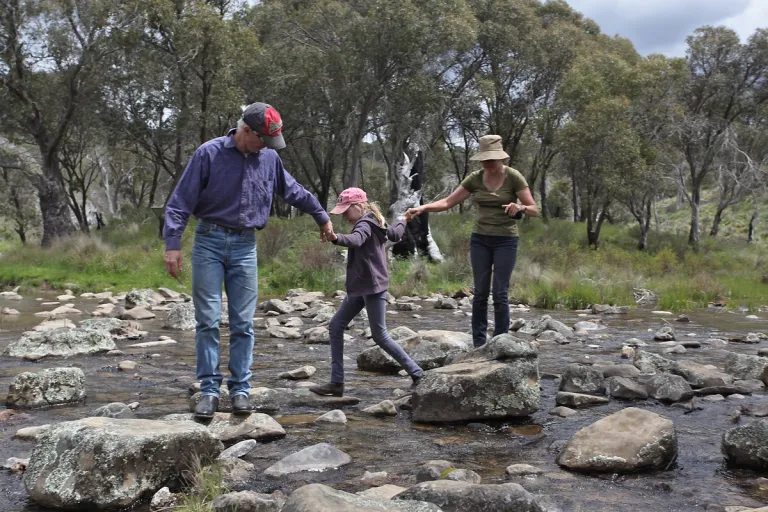No-one likes to get a batch of bad fuel. But it can happen. It did happen – to me! I thought I’d share my story to explain how it happened, what it cost to repair, and share a few ideas on how to prevent it. The good news here is that if you are insured with Club 4X4, then you are covered for contaminated fuel, and we can help you through the process.
How it happened
I’d just finished doing some filming for a segment of Pat Callinan’s 4X4 adventures (yes, you’ll see my mug on the show, along with my beautiful family). I was heading back towards civilisation in Northern NSW, and the fuel light came on. I know in the Everest that I’ve got a little more available in the tank than the computer tells me, but I was also towing out Tvan so I wasn’t sure if I’d make it back to the next major town.

On scene with the family for some filming – it will air on TV sometime soon!

My son having a go at skimming some rocks…

Our setup by the River – It was magic…

The Everest is such an under-rated offroader. It performed brilliantly off-road…
Anyway, I jumped onto the inbuilt Navigation system and looked up the nearest fuel stations. I found one that was listed as a major brand about 60km away in the direction I was headed, which I was confident I could reach.
When I pulled up to the service station, it was a different brand to that listed on the navigation system, but the kids were hungry and tired and it had a takeaway shop too which meant it ticked the boxes.
I filled up a full tank, paid the cashier, then joined the family for lunch. Everything had gone perfectly with the trip so far, and before long we jumped back into the Everest to continue our journey back towards Coffs Harbour.
I got no more than 20km down the road, when up a big hill I heard a beep, and noticed the Everest start to decelerate. I looked down and the error message was ‘low fuel pressure’. I pulled over half way up the hill, turned the vehicle off, and waited 5 minutes. I had a Scangauge so I attempted to try to reset any error codes, although there were none showing in the system.
When I went to start the car again, it fired up, but straight away the low fuel pressure warning came on. It clearly wasn’t going to go away. I didn’t want to stay on the side of a hill, so I limped the Everest and trailer to the top of the hill and then pulled over and called the Roadside assistance number.

Pulled over at the top of the hill. At least we had plenty of food and water, and somewhere to sleep if we’d needed it!
They sent me a text with a link to record my GPS location (despite me having the co-ordinates), and then sent someone out.

Something you never want to see, but when you see the fuel sample you can understand…
Several hours later, a tow truck arrived and loaded the vehicle onto the tilt tray. The nearest ford dealer was 2 hours away, in Coffs Harbour so that’s where we were heading. On the way, I looked up accommodation, deciding to settle on the closest motel to the dealership so I could chase them the next morning. This would also ensure the family got a good nights sleep given the hours sitting on the side of the road and the fact it would be well after dark when we arrived back in Coffs Harbour.
I rang ahead to the motel and confirmed they could store the Tvan there until the vehicle was fixed, and the towing company dropped the Everest out the front of the Ford Service centre and Tvan at our Motel. We ordered room service, and then went to bed.
What happened next
First thing the next morning, I walked down the road to the Ford Service centre with the vehicle keys and had a chat. I have to say that the guys at Mike Blewitt Ford in Coffs were fantastic. They listened to my story with interest, and got to work straight away to diagnose the problem. They offered me a loan vehicle while mine was being repaired, which meant the family wasn’t trapped in the motel, and also promised to keep me updated.
Given the 11am checkout of the Motel, I asked for an update then so I could book another night if necessary. True to their word, they called me at around 11 to confirm they were of the belief that it was a dodgy fuel issue, but that they would need another 24 hours to work through things.
I booked another night’s accommodation and took the kids to the Big Banana. Later that afternoon I got a call to say that they had drained the tank and it was definitely the fuel. I popped over and had a look, and the fuel certainly didn’t smell right and it also had bits of debris floating in it.

Pretty sure that there shouldn’t be sediment in here…
At that point, the guys explained that the fuel pump had burned out as a result of the contamination, meaning it had to be replaced, and that the fuel lines were all wrecked too. The team at Mike Blewitt Ford pulled all stops to get parts and get me back on the road, which I’m really grateful for!
Coffs Harbour

Early morning walks to tire the kids out while waiting for news…
I got out early in the morning with the kids and did some walks. There is a beautiful breakwall and also a beautiful walk out to Mutton Island from the jetty in the centre of town. It was magic getting out there early, to tire the kids out and take my mind of what else was happening…

Car Ready again – D+2
At the end of our second day in Coffs Harbour, I got a call to say that the Everest was running again. I went over to pick it up and the team ran me through what they had done:
- Drained and cleaned the tank
- Replaced all fuel lines
- Replaced the fuel pump (which it turns out had burned out due to the debris int eh tank)
- Flushed the injectors and engine with 35L of clean diesel, along with additives in an attempt to clean them
It turns out injectors were in short supply, so if they had replaced them, I would have been waiting for a while, which is why they did what they did. The good news is that after this, the Everest came back to life.
What was the cost?
The costs incurred were as below:
Repairs: $2,600.00
Tow: $450.00 (the vehicle was covered by Roadside assistance, but we had to pay for the Tvan)
Accommodation: $750.00
Incidentals: $400.00
Total: $4,200.00
What did the fuel station say?
Once I had seen the fuel myself, I called the Service Station to advise them I had broken down 20km after filling up. I advised them that there were particles in the fuel I wanted them to know so on-one else would breaking down from the fuel. They got quite defensive, and told me that the mechanic was probably lying to me, or that my fuel tank was the problem. I let them know I’d be doing some testing and be in touch, surprised at the response.
Getting the fuel tested
I decided to get the fuel tested to understand what it was. I took about 10L of the fuel from the dealer, and when I got back to Sydney I sent it off for testing. It cost $265.00 to get the fuel tested, and it also took about a week to get the results given the comprehensive nature of the tests.
When I finally got the result, it showed that the fuel itself was within the standard specification that is allowed with the exception of solid particles being in it, which were visible to the naked eye. Unfortunately the testing isn’t able to identify what the particles were, but this was sufficient to be confident that the fuel was contaminated.
The outcome?
I was lucky the injectors didn’t need to be replaced, which would have increased the bill significantly. But, the episode had cost $4,465.00 including fuel testing, and 3 days of my trip.
What would you do next?
Given the result of the fuel testing confirming contamination, you could attempt to recover from the fuel station by sending them a letter, along with copies of the fuel receipt, and documentation from the roadside provider confirming the time and place of the breakdown, invoice for the repairs and costs incurred as a result, requesting payment of the costs incurred.
Whether you’d get anywhere would probably depend on how hard you chased, but it isn’t always easy to recover even with the evidence.
The good news here is that Club 4X4 covers fuel contamination. Yep – that’s right. If you’ve got dodgy fuel, it is covered by your policy (although misfuelling is not covered).
Key learnings
- Always keep your fuel receipts. This will prove what you bought, and when.
- Fill up at name brand service stations where possible, and avoid ones where you see the tanker filling up – that stirs up sediment from the tank which needs to settle to avoid you picking that up
- Make sure the fuel filters in your vehicle are regularly changed.
- Even if you have cover for dodgy fuel, it’s likely you’ll initially be out of pocket for repairs – the testing process that needs to happen takes 5 business days to complete, so you’ll likely need to get repairs done and then attempt a claim, unless you are prepared to delay the repairs until testing has been completed.
- A secondary fuel filter may help. Steve Etcell from AE Co 4X4 recommends a post filter, because it allows the factory filter to capture bigger particles and the secondary filter to grab finer ones. Unfortunately in this case, that kind of setup may not have prevented the fuel pump from burning out, but it could have reduced the contamination into the fuel lines and injectors. Please speak to your manufacturer about warranty before fitting a secondary filter if your vehicle is still in the warranty period
- Understand whether your insurance provider will cover contaminated fuel (separate from misfuelling which is a different issue), so you know whether you can rely on them to help you through the issue, or whether you’ll have to try to recover from the service station yourself.
I hope you’ve found this as interesting as I did going through the process. If you’ve got further questions, please feel free to ask!
Aiden

Ready to hit the road again – thanks again to Mike Blewitt Ford for the fantastic service!





